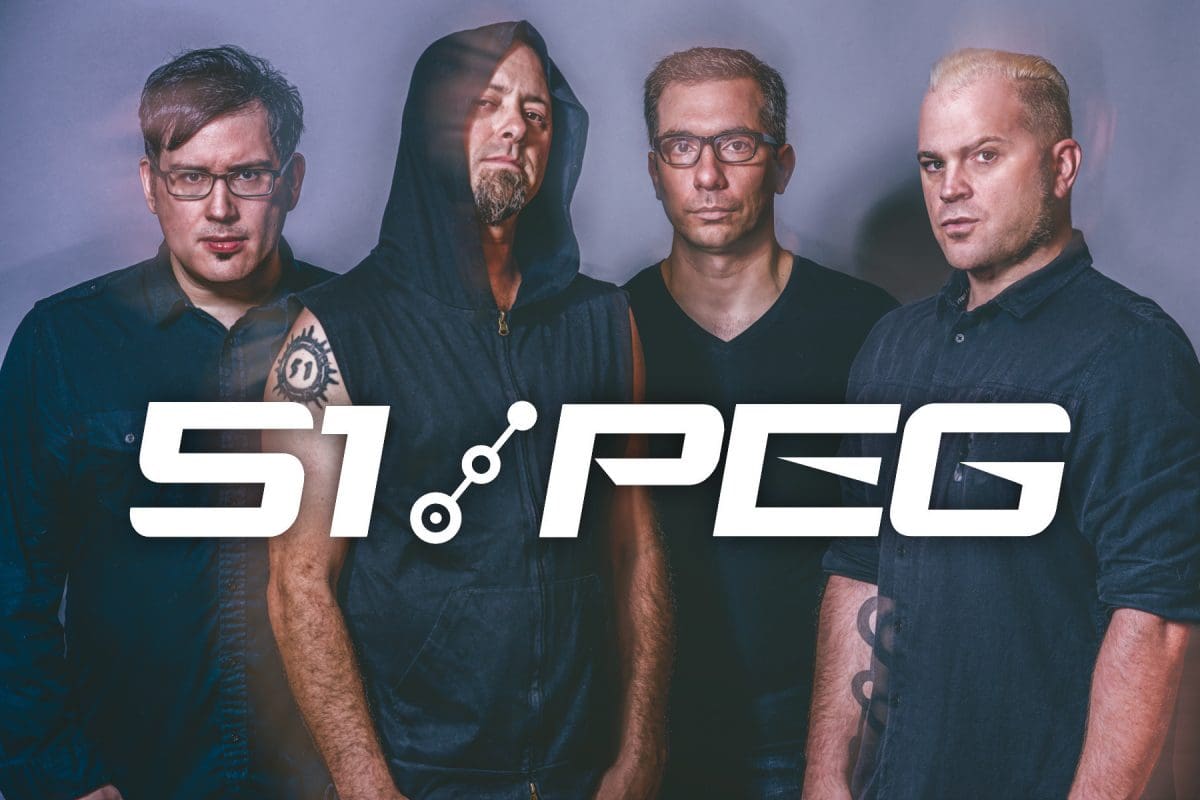It’s increasingly crucial that bands own their fan data now

It's increasingly crucial now that bands own their fan data
Nowadays musicians and bands actively confront challenges in revenue maximisation. Most bands blame the streaming platforms, and there is some truth in it, but there is a way bigger problem, and that is that bands often lack a sustainable fan data source which they own for the full 100%. I say ‘sustainable’, because as a musician and band you do not own your data on platforms like Spotify, Apple Music, or even Amazon (CDs, downloads and streaming).
Social media have the very same problem, apart from having an abysmal reach these days.
There is only two platforms worth talking off that give you the option to gather and own data from your fans and that is Bandcamp (which itself is being criticised by some bands) and Bandzoogle (plus some other smaller digital distributors). But I’ll talk about these two platforms later on in this article.
Let’s dive into the main problem first.
Underutilisation of fan data
The underutilisation of fan data is a major problem in the music scene, whether it concerns small or big bands. As we know, the music industry, heavily influenced by streaming services, typically benefits well-known artists, leaving new and independent musicians with suboptimal revenue options (and with no fan data at all except for some statistics).
Sure, it’s a nice ego trip if you have thousands of Spotify (just an example) followers, however, apart from Spotify’s algorithm that triggers your new releases to your followers, you have little to no way to actively push your new releases to your fans. And it’s not just Spotify that has this problem, all of the mainstream platforms suffer from the same disadvantage: no direct push towards fans. These platforms typically provide some level of analytics, but they don’t offer the comprehensive data that artists could use for direct marketing or fan engagement strategies.
But there is more. When social media platforms emerged, the organic reach seemed endless. However, and every band and artist has noticed this, Facebook’s organic content reach for instance has been declining heavily, with an analysis of 933,200 social posts showing a substantial drop in the average reach rate to just 4.32% in 2023.
Let’s check the case of Facebook as an example.
Facebook’s declining organic reach
The organic reach on Facebook pages has undergone significant changes over time, primarily influenced by adjustments in Facebook’s News Feed algorithm. Here’s a brief overview of the trend since 2007:
- 2007-2012 – Introduction of Fan Pages: From 2007, when Facebook introduced “Fan Pages”, businesses and organizations could freely reach their audience. However, by 2012, it was revealed that only about 16% of a page’s fans saw its posts in their News Feeds.
- 2014 – A Sharp Decline in Reach: Research from Edgerank Checker and Social@Ogilvy indicated a drastic decline in organic reach. Between February 2012 and March 2014, the average organic reach for Facebook Pages fell from 16% to 6.5%. For pages with more than 500,000 likes, this could be as low as 2%.
- 2016 – Reemphasis on Friends and Family Content: In 2016, Facebook adjusted its algorithm to prioritize content from friends and family over that from Pages. This change caused a further decrease in organic reach, with SocialFlow reporting a 42% drop between January and May of that year.
- 2017 – Alternative News Feed Experiment: Facebook experimented with an ad-free News Feed dedicated to publisher content, indicating a potential future where Page content is separate from friends and family content.
- 2018 – Continued Focus on Personal Connections: Following the Cambridge Analytica incident, Facebook continued to prioritize personal content over Page content. Updates to the algorithm were made to favor meaningful interactions, which meant content that didn’t encourage such interactions saw decreased visibility.
The focus on user privacy and personalisation wasn’t the only factor – and I honestly think it was just an excuse – because Facebook desperately wanted to ramp up its ad revenue by getting page owners to pay for reach (and a certain point even its users but that was quickly aborted).
Facebook remains a key platform for user engagement and brand presence, with users spending an average of 19.7 hours monthly. But bands should understand that Facebook is not where you will be able to own your fan data. They own it and you will have to pay to extract any data via give aways etc.. And even then, do realise that most of your data catching updates will undergo a serious decrease in reach (because Facebook does not like outgoing traffic).
As a band you can not neglect to own your fan data, such as email and mobile contacts. If you do you will find yourself at a considerable disadvantage in the digital music realm. Sure, your label will be able to push your release to a bigger audience, but it is somewhat naive to think that you as a band don’t have to do your work too. Precision marketing, reliant on detailed fan data, yields higher engagement and response rates and will boost your revenue on the long run.
What platforms do offer fan data (and revenue)?
The question ‘What platforms do offer data and revenue?’ is not irrelevant as owning fan data is becoming more challenging for bands in the current digital music landscape as I pointed out. Therefore, bands are increasingly seeking alternative methods and platforms that can provide them with more direct and extensive access to their fan data.
There are two platforms that definitely stand out.
Bandcamp
Bandcamp, as of November 2023, reported that artists and independent labels have collectively earned $1.2 billion through its platform. In the last 30 days alone, they generated $15.8 million. Bandcamp stands out for its artist-centric approach, with 82% of sales going directly to artists, contrasting with the lower per-stream payouts from major streaming services.
It makes the platform as the number one B2C platform for bands.
If you look more closely into Bandcamp’s succes, you will notice 3 main factors that contributed to the success:
- Artist-Centric Revenue Model: Bandcamp’s structure, where 82% of sales proceeds go directly to the artists, stands in contrast to the much lower per-stream payouts of major streaming services.
- Focus on Downloads: Despite downloads accounting for only 3.6% of global recorded music revenue, Bandcamp’s emphasis on this model has proven financially beneficial for artists.
- Direct Artist-Fan Connection: The platform facilitates a direct relationship between artists and their fans, enhancing fan engagement and loyalty, and thereby boosting sales.
Bandzoogle
Bandzoogle was founded in 2003 by Chris Vinson, a musician himself. The creation of Bandzoogle was inspired by Vinson’s experience in building a website for his band, Rubberman.
Bandzoogle is now a platform that enables musicians to create their own websites, offering them a professional online presence. This service goes beyond mere website creation by providing tools for selling music and merchandise.
In 2023, Bandzoogle’s members collectively surpassed $100 million in sales through their websites. That’s the result of actively engaging with fans and sell merchandise and music directly through their own channels.
If you look more closely into Bandzoogle’s succes, you will notice 3 main factors that contributed to the success:
- Direct Fan Engagement: Artists using Bandzoogle have the ability to create a direct line of communication with their fans. This can include exclusive content, early access to new releases, and personalized experiences.
- Diversified Revenue Streams: By using the platform, artists can diversify their income sources. This includes sales from merchandise, digital products, and music directly to fans without any intermediaries.
- Fan Data Utilization: The platform allows artists to gather and utilize fan data effectively. This data can inform marketing and promotional strategies, helping artists understand their audience’s preferences and behaviors.
Other platforms
A few other platforms also offer some extra data, but don’t match the value you’ll find with Bandcamp or Bandzoogle.
Topspin is not just about connecting with fans across social networks; it extends to selling music, videos, merchandise, and even tickets, broadening the scope of artist-fan interaction. The platform’s business model, which includes a monthly licensing fee and a percentage of retail sales, aligns with the needs of bands looking for comprehensive solutions.
Bandsintown takes a slightly different approach, focusing heavily on fan management. Its suite includes tools for gathering fan data, building mailing lists, and promoting shows. What sets it apart are the insights it offers, direct messaging capabilities, and the promise of an Email Builder for more personalized marketing campaigns. It actually provides a robust framework for artists to understand and engage their audience in a more structured manner.
Mandolin‘s approach pivots towards in-depth fan understanding. With products like Fan Navigator and Mandolin Fan Pages, it offers artists the ability to create detailed fan profiles and receive marketing recommendations tailored to these insights. The integration of streaming and social stats with individual fan data presents a holistic view of the fanbase, aiding in more targeted and effective marketing strategies.
Openstage is designed to deepen fan engagement. It not only facilitates the collection of data like fan preferences and behaviours but also comes equipped with tools for data interpretation and segmentation. The addition of email marketing capabilities further enhances its utility, allowing artists to communicate directly and effectively with their fans.
Feature.fm focuses on the analytics side of music marketing. It allows artists to see which music services their fans prefer, track sales revenue, and even partake in ad retargeting. The ability to create smart links and landing pages also adds to its appeal.
And… get a website
The rise of social media platforms like Facebook, Instagram, Twitter, and others has seriously impacted how bands and musicians approach their online presence. While social media offer a possible immense reach and ease of use, there is a major issue to consider regarding the trend of bands having fewer dedicated websites: if the platform disappears (MySpace anyone?), so will your social media data (which you only will optimally reach when paying these days).
A dedicated website is way more effective for reaching a niche audience and creating a more branded, unique experience. Websites can offer exclusive content, detailed artist information, and more control over the user experience. And you will be able to sign up visitors to your website more easily than via social media.
It is something I have repeated over and over again when talking to bands, yet, I still see too many bands that have no website, don’t plan to have one and solely focus on Facebook. When Facebook will disappear, and it will happen sooner or later, you’d better be ready to have your communication mainly in your own hands.
Don’t say I haven’t warned you: Own your own data!
Since you’re here …
… we have a small favour to ask. More people are reading Side-Line Magazine than ever but advertising revenues across the media are falling fast. Unlike many news organisations, we haven’t put up a paywall – we want to keep our journalism as open as we can - and we refuse to add annoying advertising. So you can see why we need to ask for your help.
Side-Line’s independent journalism takes a lot of time, money and hard work to produce. But we do it because we want to push the artists we like and who are equally fighting to survive.
If everyone who reads our reporting, who likes it, helps fund it, our future would be much more secure. For as little as 5 US$, you can support Side-Line Magazine – and it only takes a minute. Thank you.
The donations are safely powered by Paypal.












